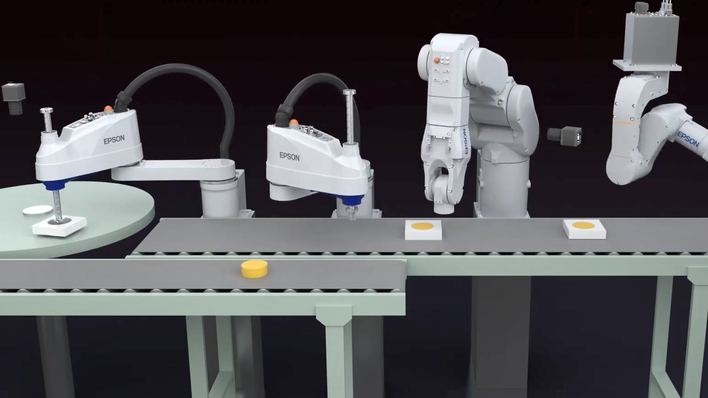The obituary for the check has been prematurely written. Almost half (46%) of consumers have written a check in the last 30 days.1 Not quite dead, indeed.
Has check volume been declining for a number of years? Absolutely. In 2015, 18.1 billion checks were written. By 2021, the Federal Reserve reported 11.2 billion checks were written.2 11.2 billion is still a big number. Will check volumes continue to decline? More than likely. Will checks become obsolete? Very, very unlikely.
If checks will continue to be a critical financial instrument, the question you should be asking is, “What are we going to do about the checks we’ll need to process in the upcoming years? How can we process them efficiently and cost effectively to help minimize returns, delays, and fraud?”
The following information shows how checks are far from dead and explains how a cost-effective multifunction teller device can increase check capture efficiency and minimize operational risk.
Checks will be with us for a long, long time
Unless the U.S. Government mandates that checks will no longer be accepted — an extremely unlikely scenario that hasn’t even been seriously discussed — consumers and business will continue to use checks. There’s plenty of reasons why checks won’t disappear.
First, they are a tried and tested financial document that gives you tangible evidence that you sent or received money.
Second, they are simple to use, and you can write a check to literally anyone. You don’t need to set up a person-to-person transfer using Zelle, or PayPal, or Venmo or any number of Peer-to-Peer (P2P) payment tools that let you send money directly to another person. And checks are low-cost. The vast majority of financial institutions do not charge for check processing.
The most likely scenario is that check volumes will level out. Even if check volumes continue to decline, it will be years before the last check is written and processed.
Checks by the numbers
The higher the dollar value of the transaction, the more likely that the transaction involves a check. Consumer checks account for only 1.9% of all payment instruments used for purchases, but they account for about 9% of transaction values. When it comes to paying bills, checks are even more popular, accounting for 11% of transactions and 12.4% of value.3
If the check is dead, businesses haven’t heard the news. Checks are still widely used for business to consumer (B2C) and business to business (B2B) payments and are the most used payment instrument among small and mid-sized business. Mastercard estimates that checks account for more than half of the $25 trillion B2B payments market.4
Even consumer online bill pay often results in a bank-created check sent to a business. B2C payments include rebate checks or checks as part of a court order, such as Netflix paying all its subscribers $3.98 as part of a class action suit judgement on overcharges. Checks remain the simplest way to get these payments into consumers’ hands.
The faster, the better
One of tellers’ major responsibilities is check capture: accepting a paper check or checks from the branch customer and scanning the paper document in a device that converts into an electronic format.
There are two major reasons why faster check capture is desirable: to help combat increasing volumes of check fraud and to help ensure that your branch customers are satisfied with the service they receive on the teller line.
1. Check Fraud on the Rise
Check volumes may be trending downward, but check fraud is on the rise, or “rampant” as the Federal Reserve of Boston writes.5 Criminals are attracted to this lower tech crime simply because it’s easy to pull off. Checks for government assistance, Social Security and unemployment benefits are relatively easy to steal from mailboxes. It’s easy to wash the ink off a check and write in whatever they want.
Pandemic relief checks were a really easy target. Multiple sources report that COVID-19 stimulus payments totaling $1.4 billion were sent to more than a million Americans who had died.
According to the Financial Crimes Enforcement Network (FinCen), check fraud is the largest source of illicit proceeds in the U.S. In 2021, financial institutions filed over 350,000 check related Suspicious Activity Reports (SARs), a 23% increase over 2020. In 2022, the number of check related SARs was more than 680,000.6
When it comes to detecting check fraud, speed is critical. The quicker the teller scans the check and the check is entered in the system, the faster you can identify fraud. If there is an issue with a check, the teller can resolve it with the customer at the teller line versus accepting the check, putting in a drawer and sending it out for capture that night.
Faster processing also results in fewer returns from insufficient funds, errors on the check, or check fraud. If the check is fraudulent, faster detection results in significant cost savings since every $1 of fraud loss actually costs $4.36.7
2. Like the Check, The Branch is Still Alive
Along with the check, the branch was also written off as dead. But consumers didn’t get the news. Eight in ten consumers prefer traditional banks over digital-only banks in large part because they want the ability to speak with a teller face-to-face.8
Yes, the trend has been for financial institutions to close some branches: in 2009, there were almost 100,000 branches in the U.S. Today, that number is down to 80,000.9
80,000 is still a big number.
Even with 24/7 digital banking at their fingertips, many consumers still plan to visit a branch. In fact, visits to branches have grown to just below pre-pandemic levels. Almost three-quarters (72%) of consumers say they plan to use their bank’s branches at the same rate as last year. And customers younger than 40 years old are the most likely to increase branch visits.10
Benefits of a multifunction teller device
It’s clear that financial institutions will still need to process billions of checks for years to come. The goal should be to process those checks correctly and efficiently to reduce fraud. A multifunction device that includes check and ID card scanning, cashier’s check printing and integrated thermal receipt printing is cost effective. Instead of purchasing and maintaining separate devices, you purchase a single device that provides tellers with all the functions they need.
Quickly capture checks with a multifunction device that has fast scan. A mag stripe reader (MSR) plus an LCD for quick, easy access to device and maintenance status are additional features to look for.
No, the check is far from dead. It’s not even on life support. Handling checks in the most cost-effective way possible will pay dividends for years to come.
——–
1 https://www.atlantafed.org/-/media/documents/banking/consumer-payments/survey-diary-consumer-payment-choice/2022/sdcpc_2022_report.pdf
2 https://www.federalreserve.gov/paymentsystems/fr-payments-study.htm
3 https://www.atlantafed.org/-/media/documents/banking/consumer-payments/survey-diary-consumer-payment-choice/2022/sdcpc_2022_report.pdf
4 https://www.mastercard.us/content/dam/public/mastercardcom/na/us/en/documents/business-payments-2022-whitepaper.pdf
5 https://www.bostonfed.org/news-and-events/news/2023/08/check-fraud-rampant-mike-timoney-column-fraud-awareness-key-to-slowing-surge.aspx
6 https://www.fincen.gov/news/news-releases/fincen-alert-nationwide-surge-mail-theft-related-check-fraud-schemes-targeting
7 https://risk.lexisnexis.com/insights-resources/research/us-ca-true-cost-of-fraud-study#financialservices
8 https://www.usertesting.com/company/newsroom/press-releases/usertestings-global-survey-reveals-when-it-comes-banking-finance
9 https://www.americanbanker.com/news/why-banks-are-closing-so-many-branches
10 https://www.jdpower.com/business/press-releases/2023-us-retail-banking-satisfaction-study
![]()



